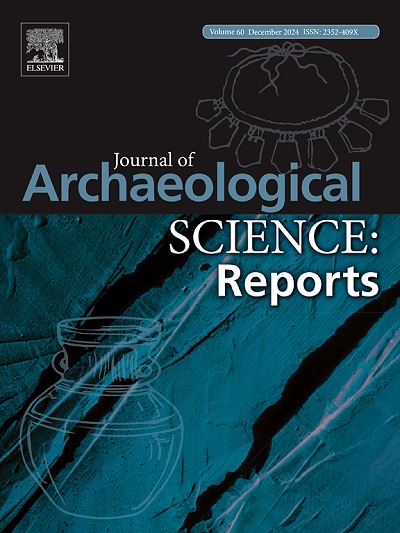中世纪教会中心斯塔波列斯拉夫的饮食转变(公元9 -15世纪,捷克)
IF 1.5
2区 历史学
0 ARCHAEOLOGY
引用次数: 0
摘要
为了研究中世纪的饮食变化,研究人员测量了来自中世纪斯塔本文章由计算机程序翻译,如有差异,请以英文原文为准。
The medieval dietary transition in the ecclesiastical centre of Stará Boleslav (9th-15th centuries AD, Czechia)
In order to investigate dietary changes during the Middle Ages, carbon and nitrogen isotopes were measured in 97 humans and 14 animals from the medieval centre of Stará Boleslav, together with a comparative dataset of 28 humans from Prague – Loretánské Square. The Stará Boleslav dataset was divided into three contexts based on grave location (abandoned unknown Early Medieval church, and collegiate chapter basilica) and chronology (pre- and post-1150 CE phases of the basilica burial ground).
The average human ẟ13C value was −19.2 ± 0.4 ‰ and the average ẟ15N value was 10.3 ± 1.2 ‰. There were statistically significant differences in ẟ15N values between all contexts with the exception of the abandoned church and the Prague – Loretánské Square cemeteries, which showed similarly low ẟ15N values. The post-1150 CE phase of the basilica burial ground showed the highest ẟ15N values, while the pre-1150 phase of the basilica burial ground occupied the intermediate position.
The results show the almost complete absence of millet in the diet of the studied dataset, suggesting that a dietary dichotomy in millet consumption was present in the 11th century population, with the inhabitants of the centres consuming less millet than observed in previously published rural datasets.
The increase in the consumption of animal products and/or fish was pronounced in the most recent phase of the dataset, after 1150 CE. Some evidence of this pattern was present even earlier, but only in the environment closely linked to the ecclesiastical centre, i.e. the basilica.
求助全文
通过发布文献求助,成功后即可免费获取论文全文。
去求助
来源期刊

Journal of Archaeological Science-Reports
ARCHAEOLOGY-
CiteScore
3.10
自引率
12.50%
发文量
405
期刊介绍:
Journal of Archaeological Science: Reports is aimed at archaeologists and scientists engaged with the application of scientific techniques and methodologies to all areas of archaeology. The journal focuses on the results of the application of scientific methods to archaeological problems and debates. It will provide a forum for reviews and scientific debate of issues in scientific archaeology and their impact in the wider subject. Journal of Archaeological Science: Reports will publish papers of excellent archaeological science, with regional or wider interest. This will include case studies, reviews and short papers where an established scientific technique sheds light on archaeological questions and debates.
 求助内容:
求助内容: 应助结果提醒方式:
应助结果提醒方式:


